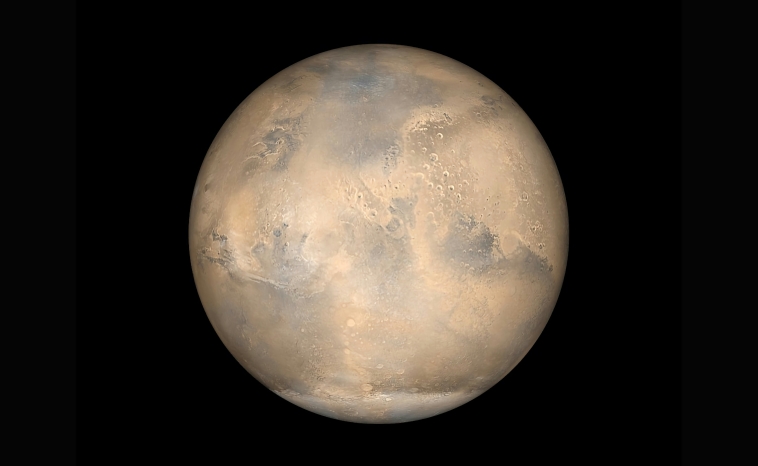What Is Terraforming?

In this article, we’ll take a deep dive into the concept of terraforming and explore the technological and ethical dilemmas we may face.
Since the early days of science fiction, the concept of terraforming has captured the human imagination. The idea of transforming alien landscapes into habitable worlds, once considered pure fantasy, has begun to seep into the realm of scientific possibility. But what exactly is terraforming, and is it a real possibility for the future of our civilisation? Read on for all the details!
What Is Terraforming?
Terraforming is the process of deliberately modifying the environment of a celestial body, such as a planet or moon, to make it more Earth-like and thus capable of supporting human life. Science fiction writer Jack Williamson first coined the term in his 1942 short story “Collision Orbit”, but it has since become a serious subject of scientific research and public interest.
The ultimate goal of terraforming is to create a self-sustaining ecosystem on another planet, making it possible for humans to live and thrive there. This would involve altering various aspects of the planet, such as its atmosphere, temperature, and surface features, and even introducing new life forms. While it may sound like science fiction, there have been serious discussions and proposals for terraforming Mars and other celestial bodies in our solar system.
History of Terraforming

The concept of terraforming has existed for centuries, with early examples dating back to ancient Greek mythology. In Greek mythology, it was believed that Prometheus created humans from clay and gave them the gift of fire, allowing them to shape their environment to suit their needs.
In more recent years, authors such as H.G. Wells and Olaf Stapledon explored terraforming in their works of science fiction. It wasn’t until the 20th century, however, that scientists began to seriously consider the possibility of transforming other planets for human habitation. The groundbreaking ideas of scientists like Carl Sagan and Gerard O’Neill helped to popularise and solidify the concept of transforming alien worlds for human habitation.
The Science Behind Terraforming

Terraforming relies on a complex interplay of physical, chemical, and biological processes that work together to create a hospitable environment. The scientific undertaking would be immense, ranging from adjusting planetary atmospheres to regenerating stable ecosystems.
Modifying Planetary Atmospheres
The first major hurdle in terraforming is altering an environment’s atmosphere to support human life, which often relies on releasing greenhouse gases or introducing new gases through means such as nuclear reactions. This step is critical for achieving Earth-like temperatures and air pressure.
Managing Planetary Surfaces
The physical landscape of a planet can impact its ability to sustain life. Managing planetary surfaces might involve techniques to melt polar ice caps, create stable weather patterns, and mitigate radiation. This challenging stage in terraforming depends on advanced engineering and strategic planning.
Seeding Planetary Life
Life plays an integral role in shaping the environment of a planet. By introducing hardy Earth organisms or engineering life forms suited to the alien world, the process of terraforming can be exponentially accelerated, converting inhospitable conditions into a new biosphere.
Potential Projects

From the dusty plains of Mars to the choked skies of Venus, numerous worlds within our own solar system have captured the attention of terraforming visionaries. These projects, both real and fictional, represent some of the most ambitious undertakings in human history.
Mars
With its similarities to Earth and the fervent interest of space agencies and private companies, Mars has become the focal point of real-world efforts in planetary engineering. Possibilities range from constructing over vast regions to redirecting comets to release their water and gases.
Venus
While Mars often takes the spotlight, the potential for terraforming Venus – with its thick carbon dioxide atmosphere – presents a compelling challenge. Ideas have ranged from introducing genetically modified algae to create Earth-like conditions to the colossal task of altering Venus’s rotation.
Fictional Worlds
Science fiction is rife with tales of terraforming, providing both inspiration and cautionary tales for the real world. Works by authors such as Kim Stanley Robinson (“Red Mars” series), Isaac Asimov (“The Gods Themselves”), and Frank Herbert (“Dune”) have offered vibrant depictions of terraforming projects and their societal, political, and ethical implications.
Ethical and Environmental Considerations

The idea of terraforming raises profound ethical questions. Proponents argue it is an invaluable tool for protecting humanity, while opponents caution against the possible unforeseen consequences and altering the uniqueness of other planets.
Advocates for protecting planetary bodies’ natural states argue that every world has inherent value, and ethics should guide our approach to exploration and potential colonisation. Preservation efforts would seek to prevent significant changes in a planet’s unique characteristics, such as landscapes or atmospheric compositions.
Furthermore, introducing Earth life to alien ecosystems could lead to devastating consequences, from the extinction of native organisms to the alteration of an entire planet’s ecology. Our current scientific knowledge limits our understanding of the full scope of such changes and may pose significant risks to the process.
The Future of Terraforming

The future of terraforming lies at the intersection of science, policy, and public perception. As we continue to unlock the secrets of space and refine our understanding of planetary science, the possibility of creating new habitable worlds becomes more tangible.
While full-scale terraforming remains well beyond our current capabilities, incremental steps toward creating habitable environments on other planets are being considered. These may include establishing protected biodomes, seeding the environments with microorganisms, or experimenting with climate-altering technologies.
Terraforming presents vast technical challenges, from the sheer scale of the required efforts to unknown long-term consequences. Our understanding of planetary science is far from complete, and the potential roadblocks are numerous, including ethical, political, and financial considerations.
Fly Me to the Stars

The prospect of terraforming other planets is a grand narrative encompassing the best and worst of human ambition. It challenges our ethical frameworks, tests the boundaries of our understanding of life and the universe, and offers a potential escape route for humanity’s future. Whether these efforts could be our saviour or something we look back on with regret, the debate will continue to shape our aspirations and our relationship with the cosmos.
While living amongst the stars is out of our reach right now, you can take a stunning trip to the heavens with the OSR’s Fly Me to the Stars VR App. Embark on breathtaking virtual reality journeys and immerse yourself in the possibilities of tomorrow’s space exploration!

